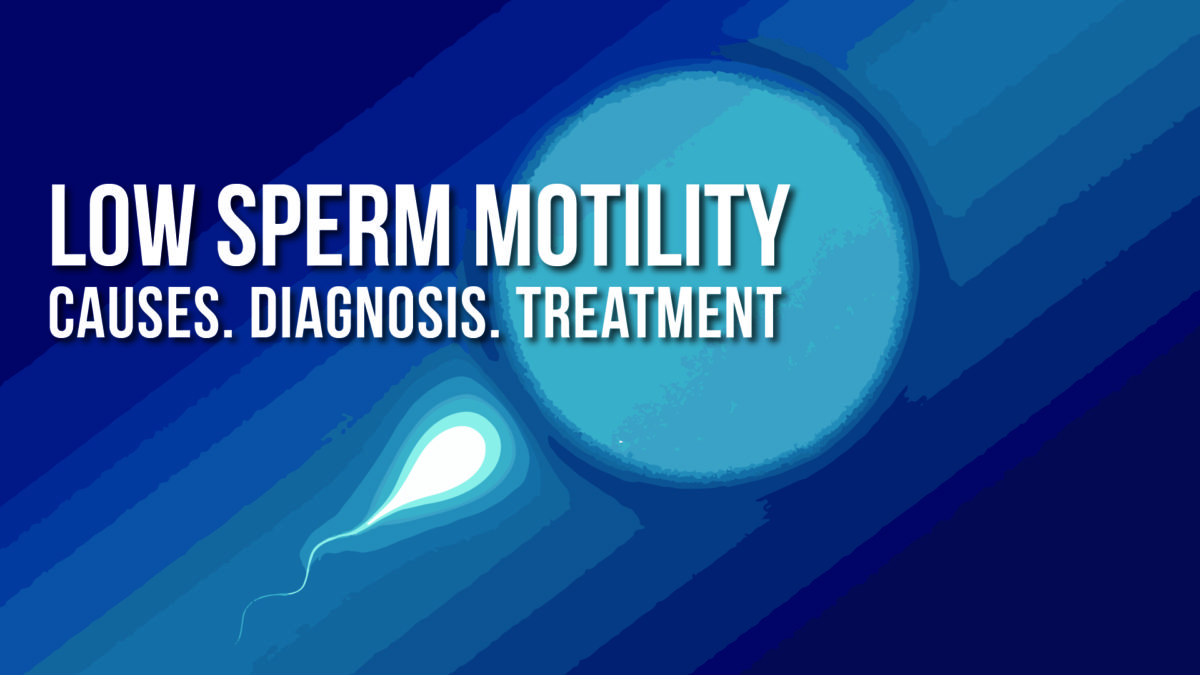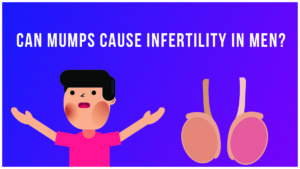Low sperm motility has been a much-feared topic. But is it discussed enough? People do not wish to talk about these things. Men, as a matter of fact, hate talking about Low Sperm motility. This article will provide you with all the facts you need to know about this productiveness factor. You will get a good understanding of what it is, its causes, diagnosis and how it can be cured.
And most importantly how this affects the biggest dream of one’s life: Having a child…
Male fertility is an important test as female fertility when getting pregnant.
When checking for a male’s ability to impregnate a woman a semen sample is checked for three main parameters.
They are:
- The number of sperms in the semen sample
- Semen Morphology which refers to the size and the shape of the seeds in the sample
AND,
- Sperm motility
So, what exactly is sperm motility?
As it is among the most significant parameters in a fertility test, it undoubtedly is something very important, right?
Simply said, it is the ability of the sperm to move.
For conception to occur the semen need to move through the fallopian tube to the egg and fertilize before disintegration.
With regard to the movement method of the seeds, there are two types of motility: progressive and non – progressive.
- Progressive type
Progressive type is considered with the sperms that swim in basic straight lines or in very large circles.
- Non – progressive type
This type is related to the ones that do not swim in straight lines. They follow a rather curvy path or move in tight circles.
Based on the latest criteria of WHO [World Health Organization] for a successful conception, there needs to be a minimum of thirty-two percent (32%) progressive motility. And also at least a forty percent (40%) of the seeds should be motile from the overall sample. It is known as the total motile sperm count (TMSC).
What is low sperm motility?
In medical terms, it is known as asthenospermia or asthenozoospermia.
This is diagnosed when the number of seeds that can move effectively towards the egg is less than the nominal value.
It simply means that the sperms are not able to swim towards the egg in due time. They are too slow and off the path to making a proper conceiving to occur. The nominal speed should be at least 25 micrometers per second for the subject to get to the egg in time.
Why does this directly affect the male’s ability to conceive?
There are millions of couples who are affected by this. It is about sixty to eighty million, all over the world.
The male infertility is the reason for about forty to fifty percent of these cases.
In most of the Asian countries, this is regarded as a fault of the female partner.
But when considering statistically about seven percent of the total male count is affected by these problems.
After ovulation, an egg waits for sperm in the fallopian tube for about 12 – 24 hours. Within this time the seed has to get to the egg and fertilize it.
However, for a person suffering from low motility, it will take more than 12 – 24 hours. Thereby affecting the pregnancy of the woman.
What are the causes of Low sperm motility?
We have come to the most important part of the article.
There are many men who are suffering from this due to gene problems as well as due to other reasons. Though a direct, specific cause cannot be given understanding the potential risks and avoiding them is very important.
The most important factor that is regarded to be causing this is stress. With a higher amount of stress, the blood pressure and the activities of the brain gets abnormal. And this causes directly to the richness of the semen produced.
But in unfortunate cases, there are men who have it in their genes. It can be cured too. But can vary with a number of facts.
When considering health conditions, the condition known as Varicocele is linked with this. It results in the scrotum veins to be enlarged.
There is also a risk of this if the testicles were damaged (the natural bags that carry the sperms). Few of the common causes that may result in testicle damages are given below:
- Infection in the testicle and /or genital areas
- Testicular cancer
- Surgeries
- Injuries or in accidents
- Undescended testicles
There are also cases where the use of alcohol and smoking has proven to be a reason. It is a very well-known fact that these two causes various diseases, and cause infertility (in both men and women). Especially smoking has a significant effect in reducing the ability. If the man smokes more than ten cigarettes per day he is more likely to be induced with it.
The environmental condition also has a special effect on the quality of the semen. Exposure to excess heat is also considered as an unhealthy factor.
Men that work in the military or those do jobs that induce repeated trauma has a risk too. It is known as work induced infertility.
The people that work in the telecommunications field which exposure to signals are also at a risk. The signals are a cause of infertility, and especially those working in tower areas need to take medical advice.
Exposure to X-ray is another cause of this in both men and women.
How to diagnose Low sperm motility?
As mentioned above the fertility test uses this as a parameter. A semen analysis is the best and the easiest way to diagnose any weakness in men.
The test considers the details from formation of the sperm to the shape, size and the movement speed.
The samples are collected in the labs through masturbations. The person will be asked to avoid from ejaculations for 2 to 7 days.
If the person is uncomfortable with the procedure, he can do it at home. But the sample has to be brought within an hour. There should be absolutely no refrigeration and it is ideal to be kept at body temperature.
Normally a person will be asked to provide two samples to be tested separately. The collection of the specimen can be anywhere between two to four weeks apart.
Prevention methods: for a better fertility
Here, prevention does not mean that you prevent the low sperm motility. But you prevent from factors that can cause it. In other words, you will be acting to maintain a quality lifestyle with balanced sexual health as needed.
The first and foremost method to improve it requires a complete change in the lifestyle. It does not include a complete change in the place where you live. But, this requires more than a few sacrifices.
Men who are diagnosed with the slightest possibility of this are mainly asked to do the following:
- Regular exercises and balanced BMI Value maintenance.
- Reduce the amount of alcohol consuming
- Quit smoking!!!
There are supplementations that help increase the fertility of the sperms too. But to make any of them work, smoking has to be completely stopped.
Recreational drugs like cannabis, opiates have a negative effect on humans. Hence doctors always advice people trying to avoid them if they are trying to conceive.
Drinking an adequate amount of water and avoiding much exposure to cellular phones and radiation is also necessary.
If the person is working in an office, it would be better if he could walk around and avoid being seated for a long time. If he is working in a heated environment, taking breaks in a cooled area is important.
Treatment options for Low sperm motility
With the development in technology, these problems are not a cause to worry. You simply need the proper guidance and medical advice to achieve your dream of becoming parents.
There are fertility drugs like clomiphene that help couples to conceive. But if they are not working, they can always move towards Assisted Reproductive Technology (ART).
It is an advanced technology whereas the reproductive disorders are treated and engineered to be able to conceive a baby.
A few of the available medical options are given below:
- IUI:
Intra Uterine Insemination is a method that technically shortens the path that the sperm have to take. The journey from the cervix to the Fallopian tube is reduced, hence it can directly reach the egg and fertilize.
This method is recommended for people from a motility range within thirty to forty percent.
- IVF:
In Vitro Fertilization is recommended for people with motility lower than thirty percent.
In this method, the woman is made to produce a higher number of eggs through medications. These eggs are then fertilized with sperm in the laboratories.
The embryo is once again planted in the woman’s womb to grow.
- ICSI:
Intra Cytoplasmic Sperm Injection is a specialized version of In Vitro Fertilization treatment. This is used to treat couples who suffer from severe male infertility.
In this method, a subject with normal DNA is selected and then is directly injected to a mature egg.
- Sperm donation:
Donation is a common treatment method whereas a donated specimen is used in the IVF process rather than that of the patients.
Myths related to treatments
The couples suffering from these disorders as well as these treatments are often frowned upon in countries. There are different myths associated with these treatment methods. And the societal beliefs in regard to these may make a person stay childless than take a treatment.
- Babies born from these treatments have health problems
People believe that these babies are underweight, lack growth and have health issues. But the growth rates of these children are similar to the children conceived in normal methods. In fact, these children could show more development than normal kids because the best quality specimens are selected through tests.
- IVF success rates are extremely low and vice versa
There are people who believe that these treatments are just a waste of money. And some people believe that they work a hundred percent.
With the developments in the past years, IVF technology has rapidly increased. Hence the chances of falling pregnant are very high.
But on rare occasions, a couple will have to undergo the treatment about twice or so. The success has been guaranteed over time, but it cannot be assured with instant pregnancy.
- Assisted Reproductive Technologies only work with women
People believe that this technology is only for women and that male issues are incurable. There are treatments for both male and female reproductive issues in ART.
- You will have twins
In the past, there were occasions where these treatments resulted in twins or even triplets. This occurred because in traditional methods a double embryo transfer was used to improve success.
But at the present; the health council’s advice is to reduce multiple births when using these treatments. The health concerns are high for both the babies and the mother.
- The treatments are painful
There are myths saying that these treatments are extremely painful. But it is not true. These treatments are designed to have a successful conceiving and in fact, are not painful at all.
Sources: https://www.who.int/reproductivehealth/publications/infertility/9789241547789/en/




